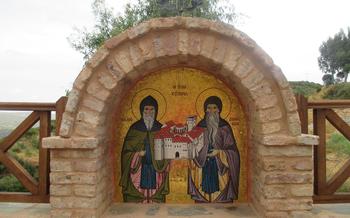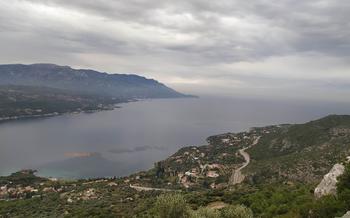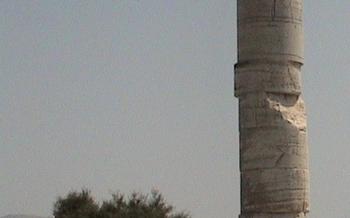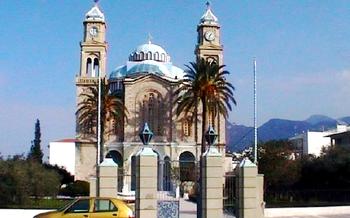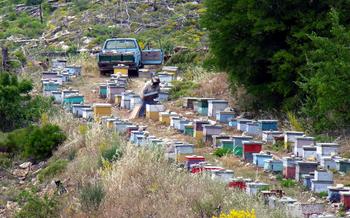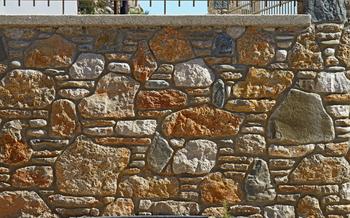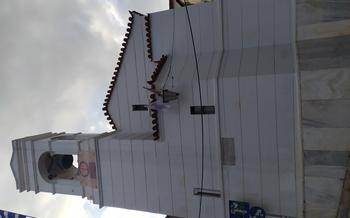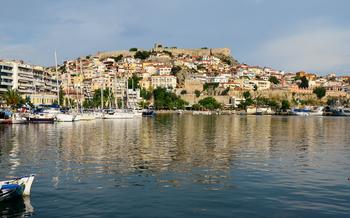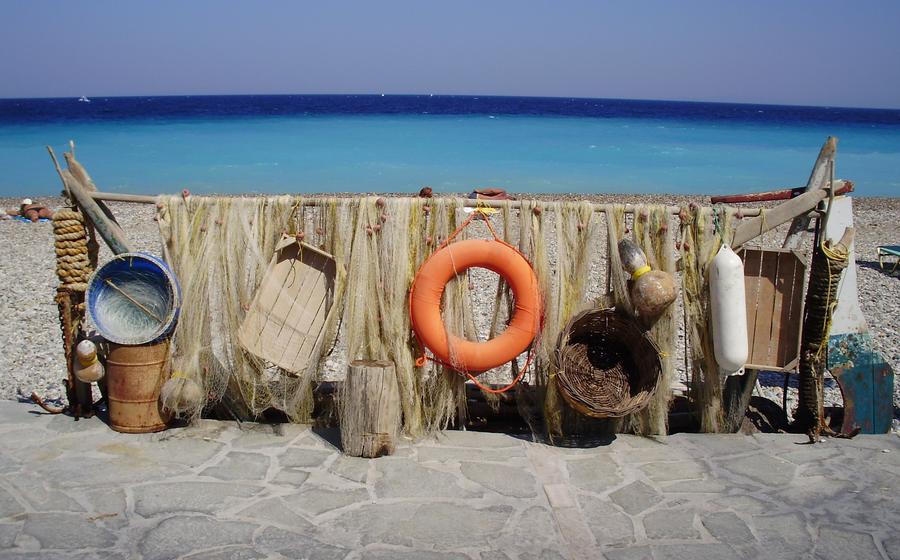
Moni Zoodochou Pigis
- Samos: A Journey to Moni Zoodochou Pigis
- Exploring the Monastery Grounds
- A Haven for Tranquility and Reflection
- The Monastery's Contribution to the Community
- Unique Architectural Elements
- Immerse in the Local Culture
- A Place of Worship and Pilgrimage
- The Healing Waters of the Monastery
- Unveiling the Monastery's Secrets
- A Place of Learning and Education
- Practical Information for Visitors
- Local Cuisine and Culinary Delights
- Insider Tip: Off-the-Beaten-Path Gems
Samos: A Journey to Moni Zoodochou Pigis
Samos, an enchanting island in the Aegean Sea, is home to a treasure trove of historical and cultural wonders, among which stands the revered Moni Zoodochou Pigis, a testament to faith and devotion. Founded in the 11th century, the monastery holds immense significance for the Greek Orthodox community, serving as a sanctuary for worship, pilgrimage, and spiritual renewal.
The monastery's origins are steeped in legend and mystery. According to local lore, the site was chosen after a miraculous vision led to the discovery of a hidden spring of healing waters. From this divine revelation, the monastery was established, becoming a beacon of hope and spirituality for the faithful.
Over the centuries, Moni Zoodochou Pigis has undergone several renovations and expansions, each contributing to its unique architectural tapestry. Byzantine influences blend harmoniously with post-Byzantine elements, creating a sacred space that exudes both grandeur and humility. The monastery's intricate frescoes and mosaics, painstakingly preserved, depict biblical scenes and the lives of saints, narrating tales of faith and devotion.
Exploring the Monastery Grounds
The Moni Zoodochou Pigis complex boasts a captivating layout and design, reflecting its rich history and spiritual significance. The main church, dedicated to the Virgin Mary, stands as the heart of the monastery, adorned with intricate frescoes and stunning Byzantine mosaics. Visitors can marvel at the vibrant depictions of biblical scenes and the serene expressions of saints and angels that grace the church walls.
The monastery grounds also feature several chapels, each dedicated to different saints or religious figures. These chapels offer a more intimate atmosphere for prayer and contemplation. The Chapel of St. Nicholas, for instance, is known for its beautifully preserved frescoes depicting scenes from the life of St. Nicholas, the patron saint of sailors and travelers.
Other notable structures within the complex include the refectory, where the monks gather for meals and religious discussions, and the library, which houses a collection of ancient manuscripts, religious texts, and historical records. The peaceful atmosphere and serene surroundings of the monastery create an ideal setting for spiritual reflection, tranquility, and connection with the divine.
A Haven for Tranquility and Reflection
As you step through the gates of Moni Zoodochou Pigis, a profound sense of peace and serenity envelops you. The monastery exudes an atmosphere of tranquility that invites you to slow down, reflect, and connect with your inner self. The serene surroundings, lush gardens, and the gentle sound of birdsong create a harmonious environment that fosters spiritual contemplation and introspection.
Take a moment to pause and soak in the tranquil ambiance. Find a quiet spot beneath the shade of a cypress tree, overlooking the breathtaking views of the valley below. Let your mind wander as you contemplate the monastery's rich history and its enduring significance as a spiritual sanctuary.
Whether you are a devout pilgrim or simply seeking a moment of respite from the bustling world, Moni Zoodochou Pigis offers a refuge for the soul. Embrace the opportunity to disconnect from distractions and reconnect with your inner self, finding solace and tranquility within the monastery's sacred walls.
The Monastery's Contribution to the Community
Moni Zoodochou Pigis is not merely a religious sanctuary; it also plays a vital role in supporting the local community and preserving cultural heritage. The monks have undertaken numerous social and charitable initiatives, extending their compassion and assistance to those in need. They actively support local communities, providing aid to families, individuals, and organizations facing various challenges.
Through their tireless efforts, the monks have established a reputation for generosity and kindness, earning the respect and gratitude of the local population. Furthermore, the monastery's commitment to preserving cultural traditions ensures that the rich heritage of Samos is passed down to future generations. Visitors to the monastery often witness firsthand the monks' dedication to their community, whether through acts of charity, educational programs, or the preservation of cultural practices.
Unique Architectural Elements
Moni Zoodochou Pigis stands out for its distinctive architectural style, a blend of Byzantine and post-Byzantine influences. The monastery complex features a central church surrounded by various chapels, chambers, and auxiliary buildings. Its exterior is characterized by whitewashed walls, arched windows, and intricate stone carvings, while the interior boasts well-preserved frescoes and mosaics that depict religious scenes and figures.
One striking feature of the monastery is its main church, which showcases a remarkable fusion of architectural styles. The domed roof, supported by massive columns, is a testament to Byzantine influence, while the intricate carvings and decorations on the facade reveal post-Byzantine artistry. The interior of the church is adorned with stunning frescoes, each narrating stories from the Bible and the lives of saints.
Another notable feature is the monastery's bell tower, a tall and imposing structure that dominates the skyline. Constructed in the 19th century, the bell tower features a unique blend of Byzantine and Venetian architectural elements, reflecting the diverse influences that have shaped Samos's history.
The monastery also boasts several chapels, each dedicated to a different saint or religious figure. These chapels exhibit a variety of architectural styles, from the simple and austere to the elaborately decorated. The Chapel of Agios Nikolaos, for example, is adorned with intricate frescoes depicting scenes from the life of Saint Nicholas, while the Chapel of the Panagia Glykofilousa features a beautifully carved wooden iconostasis.
Moni Zoodochou Pigis has undergone extensive restoration and excavation work over the years, revealing hidden architectural elements and uncovering the monastery's rich history. Visitors can marvel at the well-preserved frescoes and mosaics that have been restored to their former glory, offering a glimpse into the artistic and religious traditions of the past.
Immerse in the Local Culture
The monastery offers ample opportunities for visitors to immerse themselves in the vibrant local culture. Engaging with the monks and pilgrims provides a unique chance to learn about traditional customs and practices. Visitors can witness the monks' daily routines, attend religious services, and participate in various cultural events. The monastery also hosts vibrant festivals and celebrations throughout the year, allowing visitors to experience the rich traditions of the Orthodox Christian faith. Through these interactions, visitors can gain a deeper understanding of the local way of life, fostering a sense of connection and cultural exchange.
A Place of Worship and Pilgrimage
Moni Zoodochou Pigis holds immense significance as a pilgrimage site for Orthodox Christians, drawing visitors from near and far to pay homage to the miraculous icon of Panagia Zoodochos Pigi. Throughout the year, the monastery hosts numerous religious festivals and celebrations, each attracting a multitude of pilgrims and devotees. These events provide a vibrant showcase of Orthodox traditions, with colorful processions, solemn prayers, and heartfelt hymns filling the air.
One of the most notable celebrations is the annual pilgrimage in honor of the icon, held on August 15th, the feast day of the Dormition of the Virgin Mary. Thousands of pilgrims flock to the monastery to participate in the festivities, which include a grand procession carrying the icon through the streets of the village, followed by a solemn liturgy and a feast shared by all.
For many pilgrims, visiting Moni Zoodochou Pigis is a deeply spiritual experience. They come to seek blessings, offer prayers, and experience the tangible presence of the divine. Stories abound of miraculous healings, answered prayers, and profound spiritual transformations that have taken place within the monastery's sacred walls.
Whether you are a devout Orthodox Christian or simply seeking a place of spiritual connection, Moni Zoodochou Pigis welcomes all with open arms. It is a place where faith and devotion come alive, where the sacred and the mundane intertwine, and where the spirit finds solace and renewal.
The Healing Waters of the Monastery
Legends and tales surround the monastery's water source, imbued with healing properties that have attracted pilgrims and visitors for centuries. The water, believed to possess miraculous powers, is said to have cured various ailments and brought blessings to those who drank or bathed in it. Stories abound of miraculous cures, with individuals claiming relief from physical and emotional ailments after partaking of the holy water.
Visitors to the monastery can experience the healing waters firsthand. A fountain near the main church dispenses the blessed water, freely available to all who seek its healing touch. Whether you believe in its miraculous properties or simply seek a moment of tranquility, drinking or washing your face with the water is a unique and meaningful experience.
Practical information is available for those seeking the healing waters. The fountain is easily accessible within the monastery grounds, and there are designated areas for drinking and washing. Visitors are advised to approach the water with respect and reverence, as it holds deep spiritual significance for many.
Unveiling the Monastery's Secrets
Beyond its visible beauty and religious significance, Moni Zoodochou Pigis holds a wealth of hidden corners, secret passages, and lesser-known stories that add to its allure. During restoration and excavation work over the years, intriguing discoveries have been made, revealing the monastery's rich history and the lives of its former inhabitants. One such discovery was a hidden chamber beneath the main church, believed to have been used as a secret meeting place or refuge during times of persecution.
Legends and tales have been passed down through generations, adding to the mystique of the monastery. One legend speaks of a secret tunnel that leads to a hidden treasure buried by the monks during times of war. Another tells of a monk who disappeared within the monastery walls, leaving behind only his sandals and a cryptic message.
Visitors who explore the monastery's nooks and crannies may stumble upon forgotten artifacts, faded inscriptions, and hidden iconography that hint at the stories that have unfolded within these sacred walls. By uncovering the monastery's secrets, visitors gain a deeper appreciation for its enduring legacy and the role it has played in shaping the cultural and spiritual heritage of Samos.
Personal experiences of those who have uncovered the monastery's secrets add to the intrigue. A visitor may recount the thrill of discovering a hidden passageway leading to a secluded chamber, while another may share the awe of finding an ancient manuscript hidden within a forgotten chest. These experiences create a sense of wonder and connection to the past, making a visit to Moni Zoodochou Pigis a truly unforgettable one.
A Place of Learning and Education
Throughout its long and storied history, Moni Zoodochou Pigis has served as a beacon of knowledge and enlightenment. In the past, it functioned as a significant center of learning and religious education, nurturing the minds of young scholars and aspiring monks. Today, the monastery continues to uphold its educational mission through a variety of cultural and educational programs.
Visitors to the monastery can participate in workshops, lectures, and seminars covering a wide range of topics related to Orthodox Christianity, Byzantine history, and Greek culture. These programs are designed to provide a deeper understanding of the monastery's rich heritage and its ongoing role in preserving and promoting religious and cultural traditions.
Personal Experience: During my visit to the monastery, I had the opportunity to attend a lecture on the history of Byzantine art. The speaker, a renowned scholar from the University of Athens, shared fascinating insights into the symbolism and techniques used in Byzantine iconography. It was an enriching experience that deepened my appreciation for the monastery's stunning collection of frescoes and icons.
Whether you're a history buff, a religious scholar, or simply someone seeking to expand your knowledge, Moni Zoodochou Pigis offers a unique opportunity to immerse yourself in learning and discovery.
Practical Information for Visitors
Location, Accessibility, and Transportation Options:
Moni Zoodochou Pigis is situated in a secluded area on the slopes of Mount Ampelos, approximately 15 kilometers from the main town of Samos. Visitors can reach the monastery by car, taking the scenic route that winds through picturesque villages and offers breathtaking views of the surrounding landscape. For those without private transportation, regular bus services are available from Samos Town, providing a convenient and affordable option to reach the monastery.
Visiting Hours, Admission Fees, and Dress Code:
The monastery welcomes visitors throughout the year, and admission is free of charge. It is recommended to check the monastery's official website or contact them in advance to confirm visiting hours and any special arrangements. Dress modestly and respectfully when visiting the monastery, as it is an active place of worship. Avoid shorts, tank tops, and revealing clothing.
Tips for Planning Your Visit and Making the Most of Your Time:
To make the most of your visit to Moni Zoodochou Pigis, it is advisable to plan your trip carefully. Allocate sufficient time to explore the monastery grounds, admire the architecture, and learn about its history and significance. Consider visiting during the annual religious festivals or events to witness the vibrant celebrations and experience the monastery's spiritual atmosphere. For a more immersive experience, consider staying overnight at the monastery's guest house, subject to availability.
Anecdotes and Advice from Previous Visitors:
Previous visitors to Moni Zoodochou Pigis have shared their experiences and offered valuable advice for those planning a visit. One visitor mentioned the importance of comfortable footwear, as the monastery involves walking on uneven terrain. Another suggested bringing a camera to capture the stunning scenery and architectural details. Visitors also emphasized the importance of being respectful and maintaining a quiet demeanor while visiting the monastery, as it is a place of worship and contemplation.
Local Cuisine and Culinary Delights
Moni Zoodochou Pigis offers a unique opportunity to savor the authentic flavors of traditional Greek cuisine. Visitors can indulge in delectable dishes lovingly prepared by the monks using fresh, locally sourced ingredients. The monastery's culinary traditions have been passed down through generations, creating a rich tapestry of flavors and aromas.
One must-try dish is the monastery's signature gemista, a dish of stuffed tomatoes and peppers cooked to perfection in a rich tomato sauce. The monks also excel in preparing traditional Greek pies, such as spanakopita (spinach pie) and tyropita (cheese pie), using flaky filo pastry and generous fillings.
For a taste of local delicacies, visitors can sample the monastery's homemade glyka tou koutaliou (spoon sweets), a variety of preserved fruits and nuts in sweet syrup. These sweet treats are a symbol of Greek hospitality and make for a perfect souvenir to take home.
To enhance the culinary experience, visitors can pair their meal with a glass of the monastery's own wine, produced from grapes grown in the surrounding vineyards. The wine is known for its rich flavor and aroma, reflecting the unique terroir of Samos.
Dining at Moni Zoodochou Pigis is not just about satisfying one's taste buds; it's an immersion into the cultural and culinary heritage of Greece. Visitors will leave with a deeper appreciation for the country's rich gastronomic traditions and a desire to recreate these flavors in their own kitchens.
Insider Tip: Off-the-Beaten-Path Gems
Venture beyond the monastery walls to explore hidden gems that offer a deeper connection to Samos's rich history and natural beauty. Follow picturesque trails leading to secluded beaches, where you can soak up the tranquility and escape the crowds. Discover ancient ruins and historical sites nestled amidst olive groves and rolling hills, offering a glimpse into the island's past. Immerse yourself in the local culture by visiting traditional villages, where you can savor authentic cuisine, witness traditional crafts, and engage with friendly locals. These hidden treasures promise a unique and enriching experience, allowing you to delve into the true essence of Samos.
